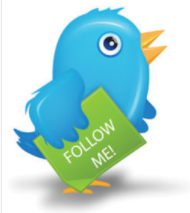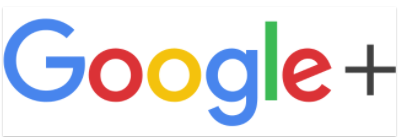Social Media Basics
Nearly everyone on Planet Earth has heard of social media at this point, so let’s face it. This is no secret!

All social media platforms across the board follow some similar unspoken rules, and yet each one of them has their own “personality,” I guess you could say!
Social Media is exactly as it sounds – it is a place for people to gather (for free) and socialize.
But I’m sure you have noticed that people are also selling products and services on social media, and this is called “Long Term Marketing” when free methods are being implemented.
Whenever people are paying for advertising on specific social media platforms (such as Facebook), then this is known as “Short Term Marketing.”
So, let’s take a look at some popular social media platforms and explore the differences.
As you know, Facebook is widely known for being a “collection” of friends and relatives where people can share their day to day events, photos and life experiences.
Although Facebook has been known to spark controversy and disputes at times, the benefits are for those who like to stay in touch with lifelong friends and relatives, and be able to share in important events.
Out of all of the social media platforms, Facebook is known for having some of the most advanced marketing strategies.

This gives marketers the opportunity to reach out to people outside of their own groups, but who have similar interests or behaviors.
For example, they give marketers the opportunity to create and save “custom audiences.” Then they have the opportunity to create “lookalike” audiences of people who are similar in characteristics, but a different group.
Facebook also provides marketers with something called “Pixels,” allowing them to “follow” people who have clicked on their ads.
This is known as “Retargeting.”
What happens is that those ads begin to show up everywhere their prospects go, long after they have left Facebook.
As spooky as this may seem, it is a marketer’s dream come true!
This gives marketers the opportunity to advertise in a laser focused way, spending their advertising dollars specifically on only people who are interested in what they have to offer.
YouTube
Because most people are visual learners, YouTube has been hugely successful by reaching out to people through different types of video.
YouTube gives everyone the opportunity to have their own “channel.”
These channels can contain several different types of video, such as movie videos, speaking videos, demonstration videos, instructional videos, screen capture videos, music videos and just about any other type of video you can think of.

Because these videos are keyword specific and people love to watch video, it is fast becoming the 2nd largest search engine, next to Google.
YouTube has historically been fantastic for marketers. The reason is that it is owned by Google. This gives marketers multiple chances to show up in the search engines.
For example, the next time you google a specific keyword, you will not only see articles, but you will see YouTube videos as well.
Marketers who combine the two tactics not only have multiple chances to get their products and services before the public, but they are utilizing tactics that work, and work extremely well.
Twitter is one of the best platforms out there for a few reasons.
One of the main reasons is because it is one of the few platforms remaining that still makes it easy to gain a lot of followers at a rapid pace, without having to pay extra for those followers.
Many of the other platforms have made it increasingly difficult to get followers without paying “attention” on the internet.
But not Twitter. They still offer this grand opportunity for free.
Originally, this company was well known for having short one or two-liners, photos, and videos.
Twitter is the place that popularized the word “hashtag.”
Hashtags have the # sign in front of them, and they are short keywords that help posts on Twitter to be easily found.
For example, you can get on Twitter and put in the keyword #internetmarketing. Then you would see all of the most recent posts that contain that hashtag.
Hashtags not only make for an easy reference, but it makes it easy for your “tweets” to be found by people who are looking for exactly what you have to offer.
Sharing on Twitter is known as “retweeting” and it is largely rewarded. Those who have retweeted get easily recognized and gain followers faster.
Twitter has a rule that applies if you have over 5000 followers. That rule is this – you can only have 10% more followers than the people you are following.
For this reason, it is unpopular to follow people who don’t follow you back, unless they are huge influencers in your niche market.
Google Plus
Google Plus is another social platform owned by Google and directly connected to YouTube.
Since all of Google’s social media platforms require a gmail address, everything is connected across the board through your email.
Your YouTube profile pic must be added in your Google Plus account.
In Google Plus, people add one another to “circles.”
These circles are great ways to organize your followers based on their specific interests.
For example, you can separate the health niche from the internet marketing niche.

You can separate social media marketers from paid advertisers and so on.
This makes it easier to target specific people who will be most responsive to what you have to offer.
Google Plus also helps businesses to rank higher in the search engines.
Google Plus also utilizes the use of hashtags for their keywords.
They also offer something called “Groups.”
As a marketer, you can post to a specific group. This way, everyone who is a member of that group has the opportunity to see the post.
This gives marketers more exposure and helps them to grow their businesses and target their audiences more effectively.
Pinterest is more of a “visual” social media platform.
Here, the idea is to get as visual as possible and inform people at the same time.
When joining Pinterest, the thing to do is to create “boards.”
Once again, each board is specific to certain topics.

On these boards, you can share your own content, or “re-pin” the content of other marketers.
These are just a few of the more popular social media platforms.
All of them look highly on those who post valuable content, participate in conversations, share one another’s content, like one another’s content and, of course, get social!!
To learn more about how you can start and grow your social media accounts, get your FREE “Beginner To Expert” Internet Marketing Course!
You will get over 60 videos and over 8 hours of training!
Click the banner below to join our FREE marketing group and gain access immediately!
What social media strategies are you using in your business? Let us know in the comments below!
Join us on our social media!

